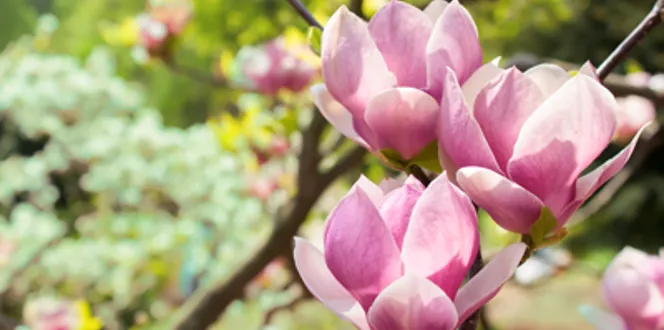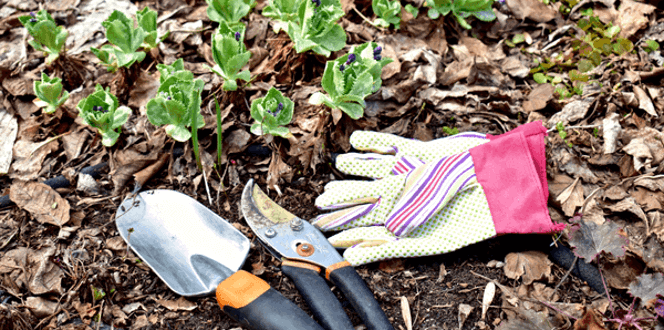Winter may seem like it has a vice grip on your landscape, depending on where you’re located.
Some years, Old Man Winter just doesn’t want to give way to Mother Nature’s spring plans.
But before you know it, winter does let go and the slush, sleet, and snow slowly fade and are replaced with green lawns, crocuses, and tulips peeking out of the ground. Along with longer, sunnier days that make us all feel warmer and more excited to be outside.
Other things you will start to notice are new buds on your deciduous trees and new shoots on your evergreens as all your trees begin to wake up. That’s why late winter and early spring are the best times to start preparing your trees for the growing season with our spring tree care checklist.
Let’s review the ways you can plan for a happy, healthy season for your tallest, strongest green assets.
Clean Up
When winter blows through your home landscape, it never does so in a nice, easy fashion. In other words, it leaves quite a mess behind.
So, your first task is cleaning up after what winter has left behind.
Prune Dead, Diseased Or Unsafe Branches

Post-winter tasks kick off with a tree inspection.
You want to inspect your trees before they begin to leaf out. It is much easier to spot issues when branches are leafless. If you see any broken, dead, cracked, or diseased branches, this is a great time to prune them.
Remove Dead And High-Risk Trees
As you inspect your trees for broken branches, possibly bent or cracked from the weight of snow and ice, you also want to check the overall tree structure.
Unfortunately, some of your trees, especially weak or young trees, can’t stand up to winter winds and the accumulation of debris. Any trees that have suffered serious injuries may become safety hazards due to stressors placed upon them by either environment or pest. In the event of another storm or high winds, branches could fall. In these cases, with the help of a certified arborist, you will want to remove weak branches and or dead, high-risk trees.
Shape Shrubs, Cut Back Perennials, Clean Up Leaves And Debris From Planting Beds
Next on your list, look at the rest of the plants in your landscape.
Rake-up leaves and twigs scattered around the property. Clean up your landscape beds by picking up trash. Improve the look of your shrubs by trimming dead branches and twigs and retaining a healthy shape. Cut back some perennials like coneflowers and mums in spring before new growth begins and other perennials like peonies and daylilies in fall after blooms are spent.
Pruning is an important maintenance task that ensures your plants’ healthy growth.
Prepare
In spring, you also want to prepare your trees for the season to come, namely storm season.
Consider Lightning Protection In Advance Of Spring Storms
Unfortunately, trees are a top target for lightning. Having a certified arborist install a lightning protection system can ensure your most susceptible trees remain safe. These systems ensure lightning takes an alternative path to the ground versus through your tree’s stable structure.
Soil Care
Soil is the base of your plant and tree growth, and most of the problems you have aboveground can be attributed to poor soil conditions. Boosting the health of your soil ensures your plant's positive health and growth.
Through Davey’s SoilCare ® Program (check your local Davey office for availability), we can test your soil for issues – whether it’s a pH imbalance or a mineral deficiency – and come up with a solution to amend your soil.
Freshen Your Planting Beds With New Mulch
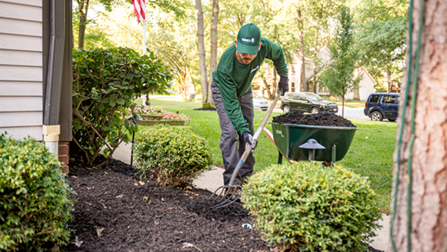
Spring is a great time to add fresh mulch to your landscape beds.
Mulch is a great addition, not only for a manicured appearance, but also to suppress weeds, maintain soil temperatures, retain moisture, and even add organic matter to your soil and plant roots.
When adding mulch, remember to add a 3- to 4-inch layer and provide a buffer between mulch and tree trunks so they don’t suffocate them or cause disease.
Fertilize Trees, Shrubs, And Your Lawn
All your plants can lose nutrients throughout the year. And when they aren’t growing in the rich soil of the forest floor that is constantly full of decaying leaf matter and other nutrient-rich organic matter, they can suffer without the addition of supplemental nutrition.
A slow-release fertilizer application can replace those nutrients and improve your tree’s vitality to help it thrive during the growing season.
Inspect Your Trees
Early spring is the optimal time to take a walk around your yard and assess winter’s wrath on your trees, shrubs, and other plants, looking for stress and damage.
Inspect Trees And Shrubs For Standing Water Or Flood Damage
As snow and ice melt and spring rains commence, water can collect in your yard.
Moisture-loving plants will enjoy this, but others may not. Valleys, swales, or low points in your yard may draw standing water and cause damage. You will want to check your trees for flood damage and consider planting water-loving varieties in these locations.
Inspect Trees And Shrubs For Overwintering Pests And Mushrooms/Diseases
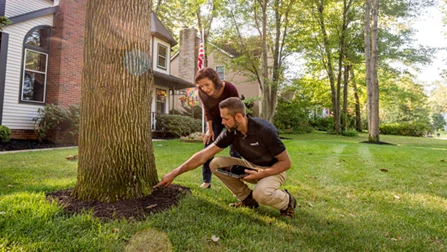
Everyone needs a place to stay warm and safe over winter. Pests are no exception. They tuck away in cozy spots in your plants and trees until the weather warms up enough for them to emerge.
You might find tiny, flat, round bumps or a sticky substance on your tree branches that could indicate scale or aphids.
In addition to pests, pathogens can lurk in trees until conditions are just right to bring them out, and mushrooms can grow at the base of trees causing issues for your landscape.
If you suspect any of these issues, having a certified arborist assess current conditions can confirm or deny your suspicions and provide you with solutions to save your trees from these opportunistic pests.
Apply Preventative Insect/Disease Treatments Advised By Your Certified Arborist
If you have repeated pest issues, you can work to prevent them. Your certified arborist can apply a dormant oil treatment to suppress overwintering pests and their eggs, which disrupts the insect lifecycle. This will reduce activity during the spring growing season.
Lawn Care Tips For Spring Prep
While you’re taking care of your small plants, shrubs, and trees, you should also spend a little time tending to your lawn. After all, it endured a tough winter too, dealing with accumulating snow and thick ice.
Let’s review a couple of spring tasks that can keep your lawn looking great as spring unfolds.
Consider Davey’s SoilCare® Program To Alleviate Compaction And Improve Root Growth
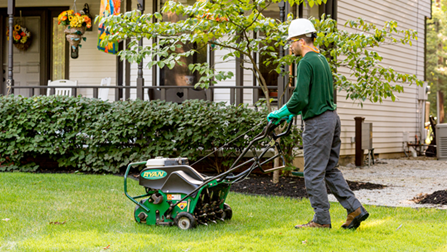
For lawns, our SoilCare ® Program can even include addressing soil compaction by letting oxygen back into your soil with aeration.
Once your soil is improved, your plants have a better chance to thrive.
Apply A Pre-emergent Herbicide To Control Weeds
Weeds are opportunistic plants. If your lawn is mowed too short, the soil is compacted, and the lawn is water-deprived or overwatered, weeds will find a way to sneak their way in.
In addition to taking great care of your lawn, using a combination of pre-emergent and post-emergent herbicides can give you fewer weed worries. You just have to know which weeds you’re dealing with and how they are best controlled. Crabgrass, for instance, is better managed before it emerges in early spring with a pre-emergent weed control product. Other grassy weeds can be targeted with a post-emergent herbicide after you see them in your turfgrass.


